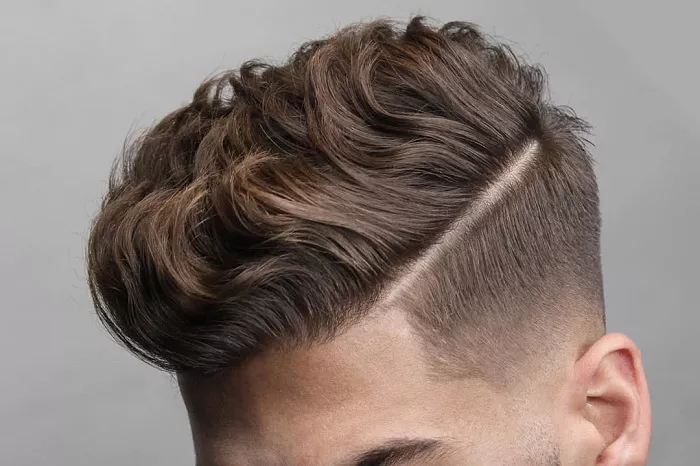Preparation Before Cutting
Tools You Will Need
A quality pair of hair cutting scissors. Look for sharp, stainless steel scissors designed for cutting hair. They should have a comfortable grip and precise blades to ensure clean cuts.
A comb. A wide-toothed comb is useful for detangling the hair before cutting and for sectioning it during the process.
Clippers (optional). If you want a very short and even cut on the sides, clippers can be helpful. Choose clipper guards of the appropriate length to achieve your desired shortness.
A cape or towel. To protect the clothing and catch any loose hair during the cut.
Hair clips. These are used to hold the hair in place while you work on different sections.
Decide on the Length
Wash and Dry the Hair
The Cutting Process
Sectioning the Hair
Part the hair in the middle from the front to the back of the head. Use a comb to create a straight and even part.
Clip the top section of the hair out of the way, securing it with hair clips. This will allow you to focus on cutting the sides first.
Divide each side section into smaller sub-sections. You can start from the ear and work your way down towards the nape of the neck. Use the wide-toothed comb to separate the hair into these smaller sections, and clip them up one by one as you work.
Using Scissors
Hold the scissors perpendicular to the hair shaft. This angle helps create a more natural and blended cut.
Start cutting from the bottom of the first side section. Cut small amounts of hair at a time, about 1/4 to 1/2 inch, and work your way up gradually. Keep checking the length and symmetry as you go by comparing the two sides.
Move to the next section and repeat the process, overlapping the cuts slightly to ensure a seamless transition between sections. Continue until you have cut all the side sections to the desired length.
For a more textured look, you can use the scissors in a point-cutting technique. Hold the scissors at an angle and snip the ends of the hair in a random pattern. This adds dimension and softness to the cut.
Using Clippers (If Applicable)
If you decide to use clippers, choose the appropriate guard size. For a relatively short cut, a guard number between 1 and 3 (where 1 is the shortest) is commonly used. Attach the guard securely to the clippers.
Start at the bottom of the side section, near the nape of the neck. Turn on the clippers and move them in an upward motion against the growth of the hair. Keep the clippers steady and at a consistent angle to ensure an even cut.
Work your way up the side of the head, following the natural curve of the head. Repeat the process on each side section until you achieve the desired shortness.
After using the clippers, you can use the scissors to clean up any uneven edges or stray hairs around the ears and the back of the neck.
Blending the Cut
Once the sides are cut to the desired length, it’s important to blend the transition between the short sides and the longer top. Unclip the top section of the hair and comb it down naturally.
Use the scissors to trim the hair at the border where the top and sides meet. Cut in a way that gradually blends the lengths, so there is no harsh line between the two sections. You can also use a thinning shear (if you have one) to thin out any thick or bulky areas where the top and sides connect, creating a more natural and seamless look.
Check the overall symmetry and balance of the haircut by looking at it from different angles. Make any necessary adjustments to ensure that the haircut looks even and proportionate on both sides.
Finishing Touches
Clean Up
Use a small pair of scissors or a trimmer to clean up any stray hairs around the ears, the back of the neck, and the hairline. Be careful not to cut too much or create an uneven line. You can also use a damp cloth or a small brush to remove any loose hair from the face and neck.
Style the Hair
Maintenance
Conclusion
In conclusion, cutting long hair on both sides short for men can be a rewarding process that results in a stylish and updated look. By following these steps carefully and taking your time during the cutting process, you can achieve a professional-looking haircut at home. However, if you’re unsure or nervous about cutting your own hair, it’s always a good idea to consult a professional hairstylist who can provide personalized advice and ensure a perfect cut. With the right cut and proper styling, you’ll be ready to show off your new, short-sided long hair look with confidence.
Related Topics:

